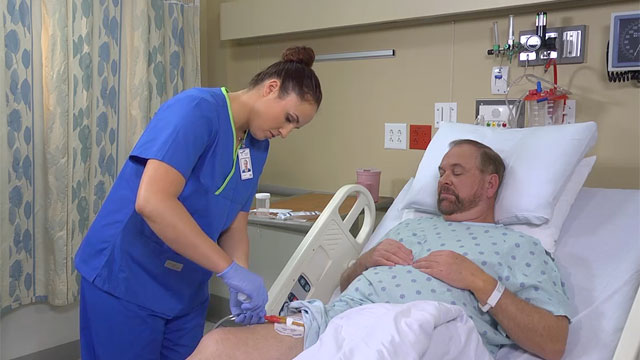2024 Catheter Specimen of Urine (CSU) without Needle: NMC OSCE Evidence-Based Practice
2024 Catheter Specimen of Urine (CSU) without Needle: NMC OSCE Evidence-Based Practice

Collecting a catheter specimen of urine (CSU) is a vital skill in nursing practice, particularly for diagnosing infections and monitoring patient health. The 2024 updates to the Nursing and Midwifery Council’s (NMC) Objective Structured Clinical Examination (OSCE) emphasize evidence-based practices, making it essential for nursing professionals to stay informed about the latest guidelines and techniques for CSU collection without using a needle.
Understanding Catheter Specimen of Urine (CSU)
A catheter specimen of urine (CSU) involves collecting a urine sample directly from the sampling port of a catheter. This method ensures that the sample is sterile and uncontaminated, providing accurate results for diagnostic purposes. Unlike traditional methods, this procedure does not require a needle, reducing the risk of needlestick injuries and enhancing patient safety
Importance of Evidence-Based Practice in CSU Collection
The NMC OSCE assesses the clinical competence of nurses and midwives who wish to practice in the UK. The inclusion of CSU collection scenarios in the OSCE highlights the importance of evidence-based practice in performing this procedure. The 2024 updates to the OSCE introduce new scenarios and marking criteria that emphasize the need for precision, patient-centered care, and adherence to best practices
Evidence-Based Guidelines for CSU Collection
Research and clinical guidelines provide a framework for the effective collection of CSU. Key evidence-based practices include:
- Preparation: Gather all necessary equipment, including a sterile syringe, specimen bottle, alcohol wipes, and a non-traumatic clamp. Verify the patient’s identity and explain the procedure to gain consent.
- Site Preparation: Clean the sampling port with an alcohol wipe for 30 seconds and allow it to air dry for another 30 seconds to ensure sterility
- Sample Collection: Use a sterile syringe to aspirate the required amount of urine from the sampling port. Transfer the urine aseptically into a pre-labeled specimen bottle.
- Post-Procedure Care: Clean the sampling port again with an alcohol wipe and unclamp the catheter if it was clamped. Dispose of waste appropriately and perform hand hygiene.
- Documentation: Record the details of the procedure, including the time, date, and any observations, in the patient’s medical records.
Implementing Effective CSU Collection in OSCE
To effectively collect a CSU in the OSCE, nurses should:
- Perform a Comprehensive Assessment: Evaluate the patient’s history and current condition, and confirm the need for a CSU.
- Apply Evidence-Based Technique: Follow the guidelines for preparation, site cleaning, and sample collection without using a needle.
- Communicate Clearly with Patients: Explain the procedure, address any concerns, and provide aftercare instructions.
- Document the Procedure: Ensure accurate and thorough documentation of the CSU collection and any patient responses.
Conclusion
The 2024 updates to the NMC OSCE underscore the importance of evidence-based practice in the collection of catheter specimens of urine without using a needle. By adhering to the latest guidelines and incorporating patient-centered care, nurses can ensure effective sample collection and optimal outcomes for patients. Staying informed about current best practices and continuously improving clinical skills will be essential for success in the OSCE and in everyday clinical practice.
